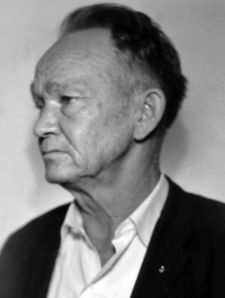Robert Chambliss: Difference between revisions
No edit summary |
No edit summary |
||
| Line 5: | Line 5: | ||
==Investigation and conviction== | ==Investigation and conviction== | ||
A [[May 13]], [[1965]] memo to Federal Bureau of Investigation (FBI) director J. Edgar Hoover identified Chambliss, [[Bobby Frank Cherry]], [[Herman Frank Cash]] and [[ | A [[May 13]], [[1965]] memo to Federal Bureau of Investigation (FBI) director J. Edgar Hoover identified Chambliss, [[Bobby Frank Cherry]], [[Herman Frank Cash]] and [[Tommy Blanton]] as suspects in the 16th Street Baptist Church bombing. | ||
The investigation was originally closed in [[1968]]; no charges were filed. Years later it was found that the FBI had accumulated evidence against the named suspects that had not been revealed to the prosecutors by order of J. Edgar Hoover. The | The investigation was originally closed in [[1968]]; no charges were filed. Years later it was found that the FBI had accumulated evidence against the named suspects that had not been revealed to the prosecutors by order of J. Edgar Hoover. Notably the interview transcripts showed culpatory statements made by Chambliss in the hearing of his niece, [[Petric Smith|Elizabeth Cobbs]]. The information was used by Alabama attorney general Bill Baxley to reopen the case in [[1971]]. | ||
In 1977, with testimony from Cobbs, Chambliss was convicted of murder for the bombing and sentenced to several terms of life imprisonment at the [[St Clair Correctional Facility]]. He died there in [[1985]], still proclaiming his innocence. Though his remains were cremated, he shares a headstone with his wife, [[Flora Chambliss|Flora]] at [[Elmwood Cemetery]]. | |||
==References== | ==References== | ||
* Smith, Petric J. & Elizabeth H. Cobbs (1994) ''[http://longtimecoming1963.wordpress.com/ Long Time Coming: An Insider's Story of the Birmingham Church Bombing that Rocked the World]'' Birmingham: Crane Hill Publishers, rpt. at longtimecoming1963.wordpress.com | |||
* "[http://en.wikipedia.org/w/index.php?title=Robert_Edward_Chambliss Robert Edward Chambliss]" (March 9, 2009) Wikipedia - accessed March 14, 2009 | * "[http://en.wikipedia.org/w/index.php?title=Robert_Edward_Chambliss Robert Edward Chambliss]" (March 9, 2009) Wikipedia - accessed March 14, 2009 | ||
* Clary, Mike (April 14, 2001) "Birmingham's Painful Past Reopened." ''Los Angeles Times'' | * Clary, Mike (April 14, 2001) "Birmingham's Painful Past Reopened." ''Los Angeles Times'' | ||
Revision as of 13:37, 2 September 2016
Robert Edward "Dynamite Bob" Chambliss (born January 14, 1904; died October 29, 1985) was convicted in 1977 of murder for his role as co-conspirator in the 16th Street Baptist Church bombing in 1963. Chambliss allegedly also firebombed the houses of several black families in Birmingham.
Chambliss worked at the City of Birmingham's auto repair shop in the 1940s. In May 1949 he threatened an African-American homebuyer not to move in, lest his house end up like S. L. Green's, which had been bombed the previous March. The threat reached the ears of Mayor Cooper Green who placed Chambliss on 10-days unpaid suspension. Chambliss used his time off to loiter around the Mayor's house.
Investigation and conviction
A May 13, 1965 memo to Federal Bureau of Investigation (FBI) director J. Edgar Hoover identified Chambliss, Bobby Frank Cherry, Herman Frank Cash and Tommy Blanton as suspects in the 16th Street Baptist Church bombing.
The investigation was originally closed in 1968; no charges were filed. Years later it was found that the FBI had accumulated evidence against the named suspects that had not been revealed to the prosecutors by order of J. Edgar Hoover. Notably the interview transcripts showed culpatory statements made by Chambliss in the hearing of his niece, Elizabeth Cobbs. The information was used by Alabama attorney general Bill Baxley to reopen the case in 1971.
In 1977, with testimony from Cobbs, Chambliss was convicted of murder for the bombing and sentenced to several terms of life imprisonment at the St Clair Correctional Facility. He died there in 1985, still proclaiming his innocence. Though his remains were cremated, he shares a headstone with his wife, Flora at Elmwood Cemetery.
References
- Smith, Petric J. & Elizabeth H. Cobbs (1994) Long Time Coming: An Insider's Story of the Birmingham Church Bombing that Rocked the World Birmingham: Crane Hill Publishers, rpt. at longtimecoming1963.wordpress.com
- "Robert Edward Chambliss" (March 9, 2009) Wikipedia - accessed March 14, 2009
- Clary, Mike (April 14, 2001) "Birmingham's Painful Past Reopened." Los Angeles Times
- Thorne, T. K. (2013) Last Chance for Justice: How Relentless Investigators Uncovered New Evidence Convicting the Birmingham Church Bombers. Chicago: Chicago Review Press ISBN 1613748671
External links
- Robert "Dynamite Bob" Chambliss at Findagrave.com
